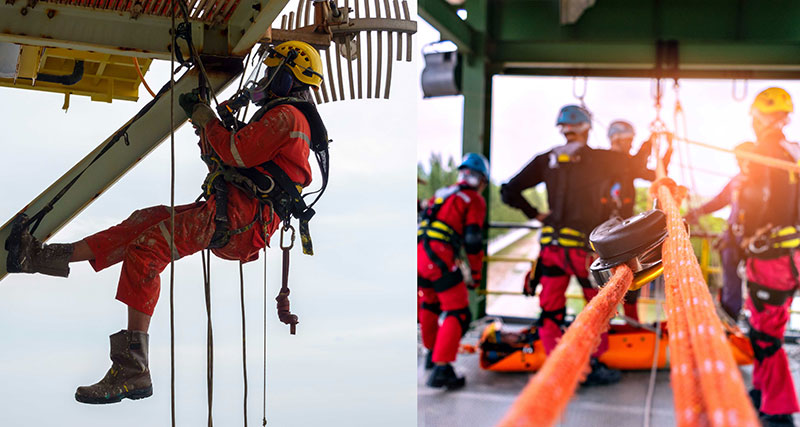Low Angle Vs. High Angle Rope Rescue: What’s The Difference?
Low Angle Vs. High Angle Rope Rescue: What’s The Difference?
July 14, 2022 |
High angle rope rescue used to refer to rescue involving the extraction of people stranded in isolated regions with substantial inclines, such as caverns, mines, and mountains. However, as high-rise buildings, stadiums and other precipitous structures become more common, it is increasingly being used in urban rescue missions. Oil and gas, and construction are examples of industries where high angle rescue is required.
The main difference between low and high angle rescues is that the higher the angle of rescue, the more difficult the rescue is. This means that more specialized training is required for the rescue team. If you want to learn more, here is the difference between low angle and high angle rope rescue!
High Angle Rescue
High angle rescue operations are for terrains with slopes of 60 degrees or more. In these situations, rescuers will need a more diverse set of skills, as they will be relying only on ropes and other specialized hoisting and hauling equipment to access and retrieve the stranded individuals. If the rope system fails, both the rescuer and the rescuee are at high risk of life and limb injury. Rescue professionals must be in good physical shape to be certified to undertake high angle rescues, in addition to having training and qualifications.
Some examples of high angle rescue include storage tanks, high-rise buildings, and wind turbines, as well as underground areas such as tunnels and mines.
Low Angle Rescue
Low angle rescue operations are for terrains with a slope of 35 degrees or less. To carry out rescue and retrieval tasks, rescue professionals use both ground and rope methods. The ground usually carries the majority of the weight of the people, with the rope systems serving primarily as support systems and balancing aids.
A common example of low angle rescues is rescuing people who have fallen over small ridges and ravines. Due to the frequency of such events, emergency crews such as firefighting squads are usually given low angle rescue training.
Steep Angle Rescue
Aside from low and high angle rope rescue, there is also a steep angle rescue. This refers to rescue efforts on terrain with slopes ranging from 35 to 60 degrees. The weight of the rescuers and rescuees is divided more fairly between the rope system and the ground in these rescue scenarios than in high angle rescue. Although rescue workers need ropes to ascend, it’s possible to descend without them.
The level of risk to rescuers and rescuees in steep angle rescue is lower than in high angle rescue but higher than in low angle rescue. As a result, the ability levels required for a steep angle rescue team fall somewhere in the middle of the two categories.
Get Trained with Rescue Solutions
Looking for expert rescue training? We’ve got you! At Rescue Solutions, we provide a variety of training options ranging from Confined Space Rescue Training to CPR and First Aid Training. We also sell high-quality rescue equipment if you ever need it in your company. To learn more, contact us today!
